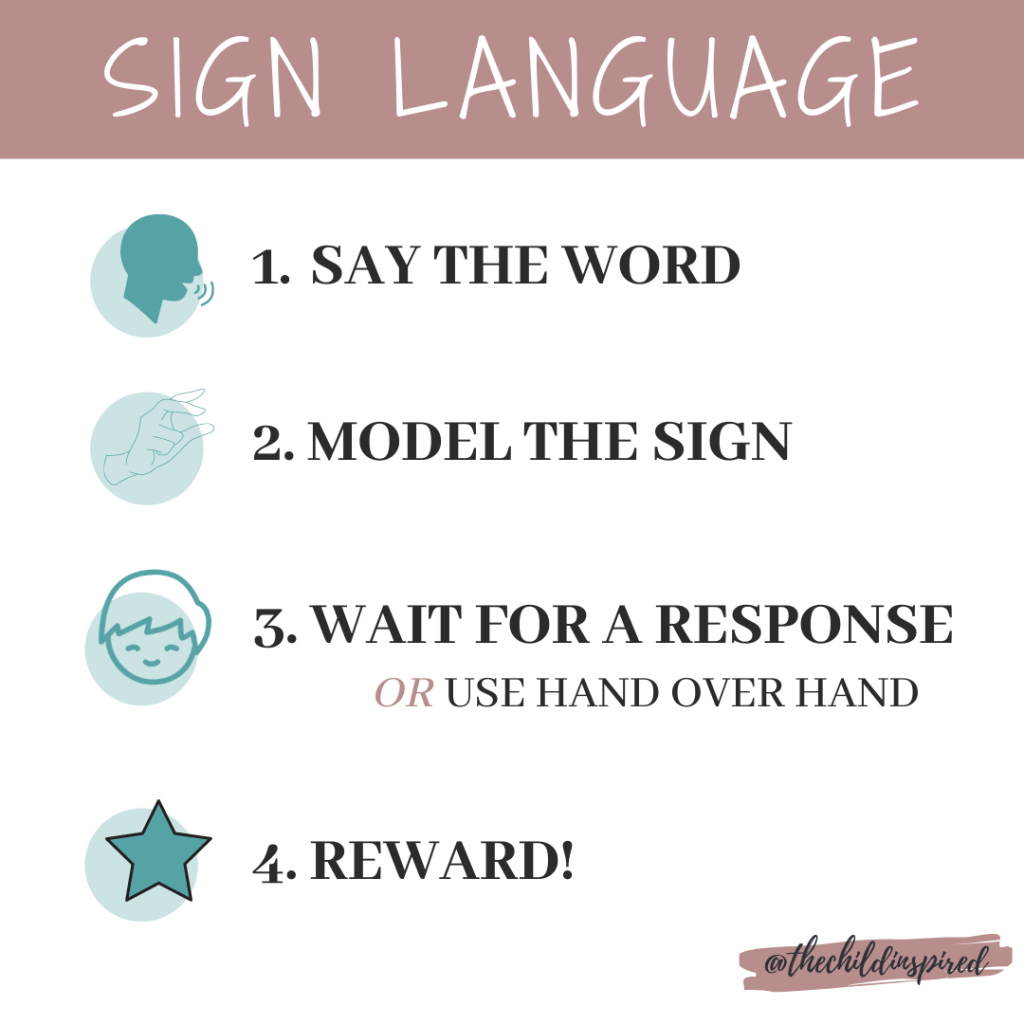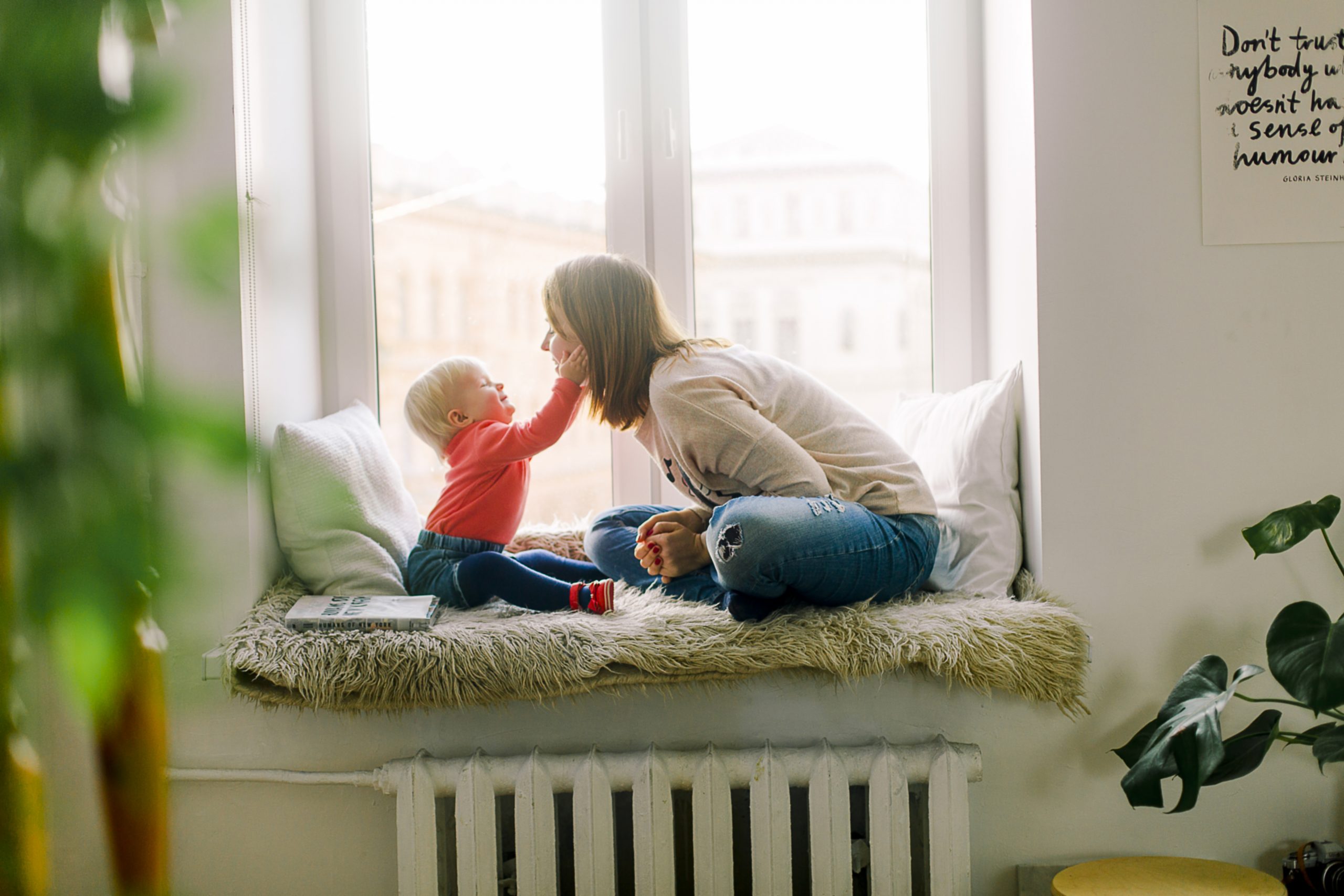When I first started working as a Speech-Language Pathologist (SLP) I remember always asking if parents were comfortable using sign language at the beginning of their child’s therapy journey. I got many confused looks and it always led to tons of questions. Some parents even said they don’t want their child learning sign language. There are many parents believe that sign language delays verbal communication. In fact, it’s quite the opposite.
Please note that I am writing this blog post for children with normal hearing.
When Do Babies Learn To Gesture?
Between 7 and 12 months of age babies begin to use sounds and gestures to get attention. They begin pointing to objects and using simple gestures like waving hello/goodbye, reaching for “up” and shaking their head no. Often times these milestones come before verbal communication.
Why Use Sign Language?
I like to think of using signs as a bridge to spoken language. Since children typically imitate and use gestures first, sign language can be very beneficial for children who are not yet talking. By using sign language, you are showing your child that words have meaning. For example, if you sign “drink,” you will get your drink. Using a sign allows you as the parent to understand what your child wants or needs, which is more functional than your child crying for their drink and you playing the guessing game to figure out what they want.
I think it’s important to note that I am not teaching my clients to be fluent in American Sign Language (ASL). I am using a few signs to get your child’s basic wants and needs met. In my experience once children begin to understand that signs and words have meaning, they become more motivated to grow their vocabulary.
Where Do We Start?
Getting started is actually easier than you might expect. Think about your daily routines (mealtime, dressing, bath time, playtime, etc.) and what words would help these routines run smoothly for you. For example, do you want your child to say they want to “eat” instead of pointing to the kitchen? That might be a good place to start! Here is a list of some common first words that might help you get started.

How To Teach
I follow four simple steps for each sign I introduce to a client and their family. Since our goal is for your child to verbally say a word, you always, always, always need to say the word (“Do you want ‘more’?”). As you say the word, model the sign. If your child is unable to imitate the sign independently, use hand over hand assistance. Meaning, you take their hands and show them exactly how to do the sign. Once they do the sign, either independently or with your help, reward them with what they asked for!

Visit The Child Inspired on Instagram to see video demonstrations of some of these signs. What was the first sign your child learned? Comment below or send a message straight to my inbox!



